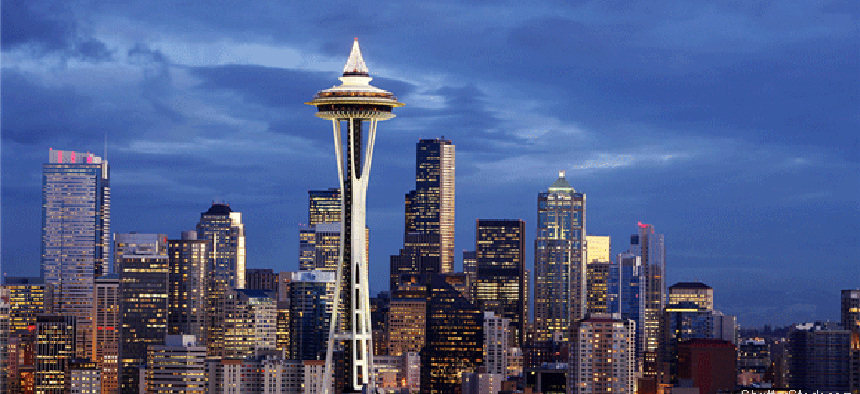Seattle lays plans for its own ultra-high speed Internet service


Connecting state and local government leaders
The city plans a 1 gigabit/sec network for homes and business, partly by making use of its unused fiber.
The City of Seattle is jumping on the high-speed Internet train, with plans to install ultra-high speed, gigabit Internet service for homes and businesses, Seattle Mayor Mike McGinn announced last Friday.
“It’s something we’ve been working on for three years… so that we can compete in the world economy, so that we can maintain our leadership role in innovation. I can’t tell you how excited I am to be making this announcement today because it’s been a long, hard road to get here,” said McGinn at a press conference.
The project is sponsored by the University of Washington. Broadband developer Gigabit Squared will develop and operate the demonstration fiber network in 12 neighborhoods with plans to use wireless to quickly deploy services to other areas in the city.
The open architecture network will utilize Seattle’s excess fiber capacity. Gigabit Squared also plans to lay more than 200 miles of additional fiber to create the network. By the end of 2014, Gigabit Squared plans for the service to be available to 100,000 residents; the network is expected to remain in place for at least 10 years.
“This new level of high-speed connectivity will provide essential infrastructure to help us address some of our biggest problems in the areas of climate, the environment, education, energy and transportation,” University of Washington President Michael Young said in a statement. “It’s definitely a game-changer, and we are delighted to be one of the driving forces in making this a reality.”
In the demonstration network, more than 50,000 households and businesses in 12 neighborhoods will have access to up to 1 gigabit/sec connections, which the city says is up to 1,000 times faster than the typical high-speed connection (In August, Akamai reported that the average connection speed was 6.7 megabits/sec in the U.S., and 2.6 megabits/sec globally.) In the second phase of the project, Gigabit Seattle will create wireless access via radio transmission by placing fiber transmitters on top of 38 buildings across the city.
“This is not the same thing as the Wi-Fi that you would find at a coffee shop,” the project team notes in an FAQ webpage on the project. “This service would allow users to get much faster upload and download speeds on their mobile devices, providing them with more choices.”
The project will not cost taxpayers or the city a dime, McGinn said. Instead, Gigabit Squared will raise capital to pay for the cost of laying the fiber and will also pay rent to the city for using its existing “dark” (unused) fiber.
The project is the first demonstration project of Gigabit Squared’s $200 million Gigabit Neighborhood Gateway Program, which will promote gigabit network innovation at six universities across the country. The program was developed in partnership with The University Community Next Generation Innovation Project.
Seattle is not the only U.S. city to adopt gigabit-speed Internet. Chattanooga launched its fiber-optic network in the fall of 2010. Kansas City, Kansas, went live with its Google-built network in November.
Not all cities will be so lucky, however. Some areas, including North Carolina, are under industry pressure to limit the National Broadband Plan, much to the chagrin of the Federal Communications Commission. The goal of the National Broadband Plan, developed by the FCC and mandated by Congress in 2009, is to ensure that every American has access to affordable broadband.

NEXT STORY: When radios can’t connect, IP provides the bridge




